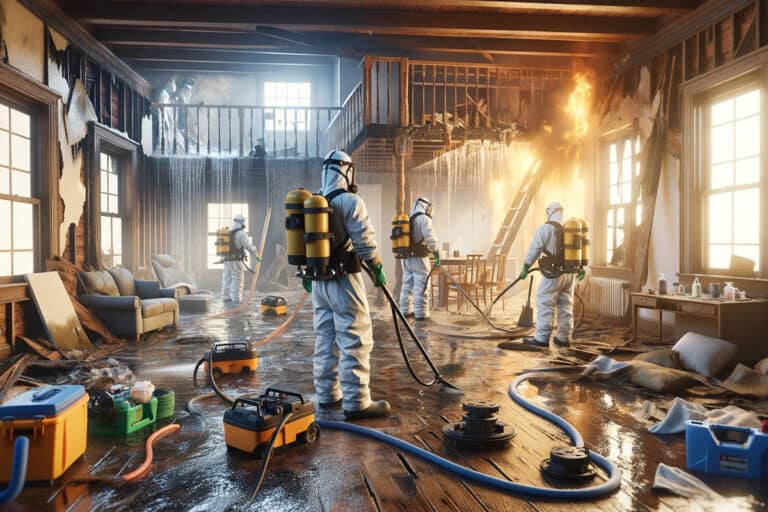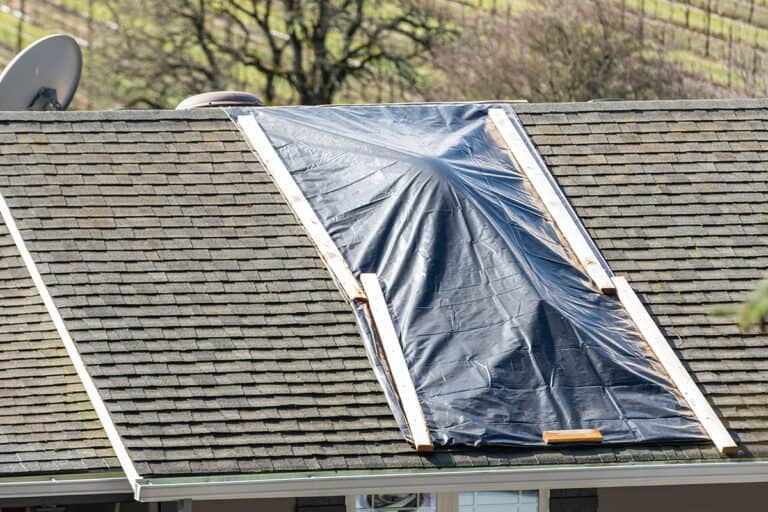Disclosure: I am compensated for purchases made through some links on this site. Click for details.
Do you know how to identify and prepare for different types of floods? Floods vary greatly in their causes, speed of onset, duration, and impacts. Understanding flood types is crucial for safety and prevention. This guide explores inland, flash, river, and coastal floods to help you stay informed and ready.
What are Floods?
Defining the Indefinable: The Nature of Floods
At its core, a flood is an overflow of water that submerges land that is usually dry. But this simple definition downplays the complexity and variety of floods. From an ecological standpoint, floods are actually a game changer—they feed the land, reshape ecosystems and sometimes even give birth to new habitats. However, from a human perspective, they often spell disaster, causing widespread destruction to homes, infrastructure, and sadly, sometimes resulting in loss of lives.
Floods can stem from a variety of causes – from heavy rainfall, melting snow, to dam breaches and oceanic influences such as tsunamis and storm surges. Floods are like uninvited guests who overstay their welcome, leaving behind a mess of environmental issues, economic turmoil and social disruption that we’re left to clean up for ages.
The Imperative of Flood Awareness
Understanding floods is not merely an academic exercise; it’s a matter of practical safety and preparedness. In the era of climate change, where extreme weather events are becoming more frequent and intense, the importance of flood awareness is at an all-time high. Knowledge about different types of floods, their warning signs, and preventive measures can be the difference between catastrophe and safety.
By learning about floods, we can better prepare, respond, and adapt to the challenges they impose. Our goal here is to help you get a handle on these intricate water events, making tricky flood science digestible and giving you tools to act effectively.
4 Types of Floods
Floods, while universally involving water, can manifest in various forms, each presenting unique challenges. In this section, we explore the 4 types of floods: inland, flash, river, and coastal floods.
Inland Floods
- Description and Causes: Inland, or general floods, happen when soil and vegetation cannot absorb abnormal amounts of rainfall, urban stormwater, or gradual snowmelt. Water then accumulates across landlocked areas and submerges infrastructure. Inland floods can last days or weeks, causing extensive damage. Causes range from prolonged rainfall and snowmelt to dam failures or overwhelmed drainage systems.
- Potential Impacts: These floods can inundate homes, agricultural lands, and disrupt transportation and utilities. Flooding can wreck homes, farmland, transportation, and utilities—as well as erode soil, taint water, and kill crops and animals.
- Historical Examples: Notable inland flood events include the 1993 floods across the Midwest United States, which caused $15 billion in losses. Recent examples include widespread flooding in Australia and India during their 2022 monsoon seasons.
Flash Floods
- Characteristics and Triggering Factors: Flash floods are sudden and intense, often occurring with little warning. They are triggered by heavy rainfall, excessive snowmelt, or dam breaks. they are characterized by their speed and destructive power moving swiftly downhill in low-lying zones, ripping through canyons, streets, or buildings with little warning. Flash floods can roll boulders, tear out trees, and destroy infrastructure.
- Safety Measures: Key safety measures include staying informed through weather alerts. You should immediately head to higher ground if flash flood warnings are issued. Avoid walking or driving through floodwaters. Just six inches of moving water can knock over an adult, while one foot of depth can sweep cars away. Avoid flood-prone areas during heavy rainfall, and never attempt to cross floodwaters.
- Notable Incidents: The 1976 Big Thompson Canyon Flood in Colorado is a notorious instance, where a sudden downpour led to rapid water rise, causing significant loss of life and property.
River Floods
- How They Develop: Sustained heavy rains, excessive snowmelt, or upstream events like dam releases can overwhelm rivers and cause overbank flooding across surrounding lands. Water levels can continue rising over days to weeks, deliberately inundating floodplains. They often develop slowly, allowing for some preparation time. River floods cause less damage compared to flash floods but can still displace communities.
- Prevention and Management Strategies: Effective strategies include constructing levees and floodwalls, river channel modification, and implementing early warning systems.
- Case Studies: Historical river flood disasters include the 1931 China floods, which killed up to 4 million people after the Yellow River burst its banks. River flood prevention strategies include levees, floodwalls, and elevating buildings. However, climate change is increasing extreme precipitation and river flood severity worldwide.
Coastal Floods
- Associated with Storm Surges and Tsunamis: Coastal areas are prone to flooding from high tides, winter storms, tsunamis, and especially storm surges. The latter involves severe winds pushing ocean water ashore in massive waves up to 30 feet high. Beach erosion further exacerbates coastal flood impacts.
- Mitigation Techniques: Preparedness is vital for coastal communities, key techniques include using flood warnings, evacuation plans, building sea walls, elevating infrastructure, implementing coastal zoning regulations, and restoring natural barriers like mangroves and coral reefs.
- Memorable Coastal Flood Events: The 2004 Indian Ocean tsunami, triggered by an undersea earthquake, stands as a tragic example, affecting multiple countries and resulting in over 230,000 deaths.
Table 1: Comparative Overview of Different Flood Types
| Inland Floods | Flash Floods | River Floods | Coastal Floods | |
|---|---|---|---|---|
| Description | Occur in inland areas, often far from coasts, where water accumulates faster than it can drain away. | Rapid and intense, characterized by a sudden increase in water levels in a short period, often within hours. | Result from sustained heavy rains or snowmelt causing rivers to overflow their banks. Often develop over a few days. | Caused by storm surges, high tides, and occasionally tsunamis, leading to sea water inundating coastal areas. |
| Common Causes | Prolonged rainfall, snowmelt, dam failures, overwhelmed drainage systems. | Intense rainfall, rapid snowmelt, dam or levee failures, and changes in land use. | Long periods of sustained rainfall, rapid snowmelt, ice jams, and upstream water release from dams. | Storm surges from hurricanes or tropical storms, high tides, tsunamis, and cyclones. |
| Typical Duration | Can last for days or even weeks, depending on the severity and cause. | Typically occur and recede quickly, within a few hours to a day. | May last several days to weeks, with water levels rising slowly. | Duration varies; storm surges are relatively brief but can be very intense, while tsunamis are momentary but devastating. Tide-related flooding can last for several days during storm events. |
| Potential Impacts | Widespread inundation of land, damage to infrastructure and agriculture, disruption to transportation and utilities, potential for water contamination and soil erosion. | Can cause severe damage to infrastructure, including roads and buildings; pose a significant risk to life due to their sudden nature; often result in soil erosion and debris accumulation. | Less immediate damage compared to flash floods, but can lead to significant impacts on agriculture, infrastructure, and housing. Displacement of communities is common. | Severe damage to coastal infrastructure, erosion of beaches, damage to marine ecosystems, and potential loss of life. High economic costs due to property and infrastructure damage. |
| Example Events | 1993 Midwest USA floods, 2022 monsoon flooding in India and Australia. | 1976 Big Thompson Canyon Flood, Colorado. | 1931 China floods, 2000 Mozambique flood. | 2004 Indian Ocean Tsunami, Hurricane Katrina (2005) storm surge. |
| Prevention Strategies | Building flood barriers, improving drainage systems, floodplain management, relocation of vulnerable infrastructure. | Early warning systems, evacuation planning, restricting development in flood-prone areas, improved land use and watershed management. | Constructing levees and floodwalls, river channel modification, flood forecasting and warning systems, sustainable land management practices. | Coastal barriers (sea walls), elevation of buildings, zoning laws to prevent building in high-risk areas, restoring natural barriers (like mangroves), evacuation plans. |
Preventive Measures and Safety Tips
General Flood Preparedness
- Stay Informed: Regularly check weather forecasts and sign up for local flood alerts.
- Emergency Plan: Develop a flood action plan for your family, including evacuation routes and emergency contacts. Turn around when encountering flooded roads. Stay away from moving water.
- Emergency Kit: Prepare emergency kits with drinking water, non-perishable food, first aid, medications, important documents, flashlights, battery-powered radios, and alternate communication devices.
Specific Strategies for Different Flood Types
- For Inland and River Floods: Elevate critical utilities and install flood barriers or sandbags around your property. Consider flood insurance if you’re in a high-risk area. One inch of floodwater can cause $25,000 in home damages.
- For Flash Floods: Be aware of the quickest high ground route and evacuate immediately if advised. Avoid driving or walking through floodwaters.
- For Coastal Floods: Understand your area’s evacuation zones and have a plan for relocating to higher ground. Reinforce your home against high winds and flying debris.
Community Initiatives
- Community Improvements: Communities can invest in flood walls, dams, levees, seawalls, drainage systems, and preserving wetlands/floodplains to mitigate flooding.
- Flood Awareness Campaigns: Participate in or organize community awareness programs to educate others.
- Community Emergency Response Teams: Join or form teams to assist in disaster response and recovery.
- Sustainable Land Use Planning: Advocate for policies that reduce flood risks, such as preserving wetlands and enforcing building codes.
Learn how to identify inland, flash, river, and coastal floods. This comprehensive guide covers flood causes, safety strategies for different flood types, the role of climate change, and preparation tips for at-risk communities.
| Checklist Item | Description | Relevant for Flood Type |
|---|---|---|
| Emergency Kit Contents | Include non-perishable food, water, first aid supplies, medications, important documents, flashlights, and battery-powered radios. | All |
| Evacuation Plan Details | Have a clear plan for where to go and how to evacuate if necessary. Ensure everyone in the household is aware of this plan. | All |
| Insurance Review | Review your insurance policies to ensure they cover flood damages. Consider additional flood insurance if necessary. | All |
| Property Preparation Steps | Elevate utilities, install flood barriers or sandbags, seal basements, and relocate valuables to higher levels. | Inland, River, Coastal (less relevant for Flash) |
| Weather Alert System Subscription | Subscribe to local weather alert systems for timely updates on potential flood threats. | All |
| Learning Evacuation Routes | Know the safest evacuation routes in your area and have alternative routes planned. | All |
| Floodproofing Measures | Implement measures like waterproofing basements, installing backflow valves, and using water-resistant materials in construction. | Inland, River, Coastal |
| High Ground Identification | Identify high ground areas nearby where you can move to quickly in case of sudden floods. | Flash, Coastal |
| Community Resources Awareness | Be aware of local shelters, emergency services, and support systems available during floods. | All |
| Vehicle Preparedness | Keep your vehicle fueled and ready with emergency supplies in case of an evacuation notice. | All |
The Impact of Climate Change on Flooding
Climate change is increasing extreme rainfall events and rapid snowmelt while elevating sea levels, together intensifying most flood types. Hundreds of millions more people worldwide may be impacted by coastal and inland floods by 2050 according to climate projections.
Communities will have a better defense against flooding if we improve early warning systems, forecasting models, nature-based flood defenses, and resilient infrastructure in danger zones.
Trends and Predictions
- Increased Frequency and Severity: Research indicates that climate change is leading to more frequent and severe flooding due to extreme weather patterns.
- Rising Sea Levels: Coastal areas are increasingly at risk due to the rising sea level, exacerbating the impact of storm surges.
Adaptation and Mitigation
- Global Initiatives: Efforts like the Paris Agreement aim to reduce greenhouse gas emissions, a key factor in climate change.
- Local Actions: Communities are adopting measures such as improved drainage systems, rain gardens, and green roofs to manage excessive rainfall and runoff.
FAQs About Types of Floods
Conclusion
Flood awareness and safety should be priorities for communities worldwide. While flooding can never be fully prevented, understanding flood types, causes, behavioral cues, and preparedness steps empowers us to mitigate risks and enhance resilience against these climate-influenced events. Share this guide and stay vigilant!
Additional Resources
For further reading and resources on flood preparedness, types, and management, the following links and references are invaluable:
- National Flood Insurance Program (NFIP): An essential resource for understanding flood insurance and risk management.
- Federal Emergency Management Agency (FEMA): Offers comprehensive information on disaster preparedness, including floods.
- The Red Cross Flood Safety Guide: Provides practical tips on how to prepare for, respond to, and recover from floods.
- World Meteorological Organization (WMO): Offers global insights into weather, climate, and water-related hazards, including floods.
- United Nations Office for Disaster Risk Reduction (UNDRR): A global platform for reducing disaster risk and building the resilience of communities and nations.





